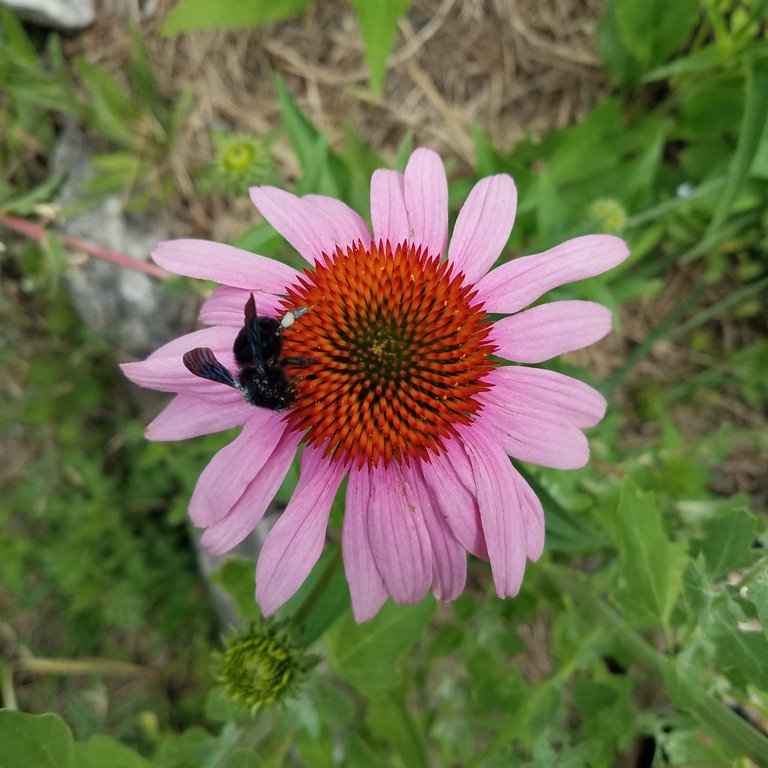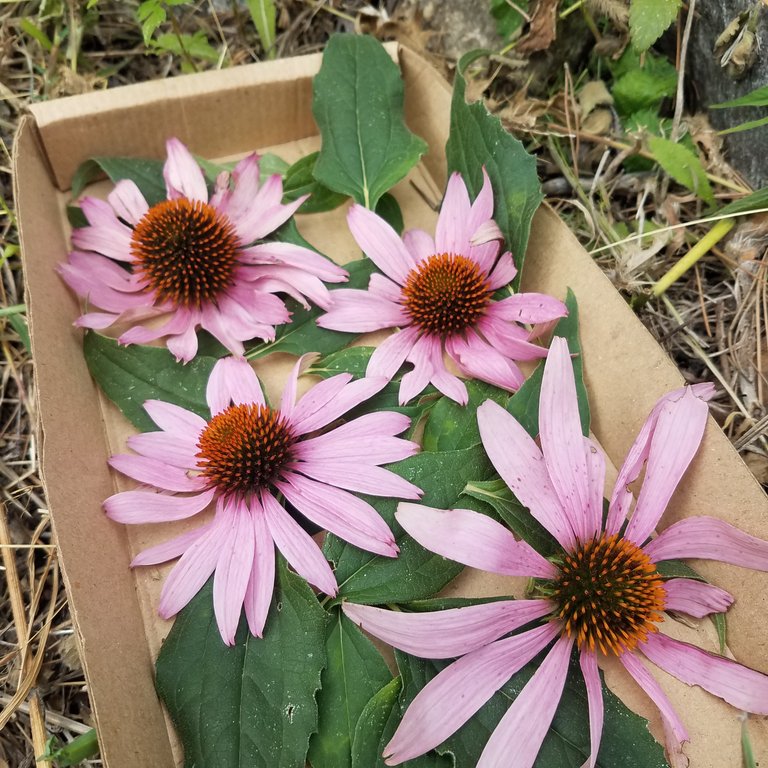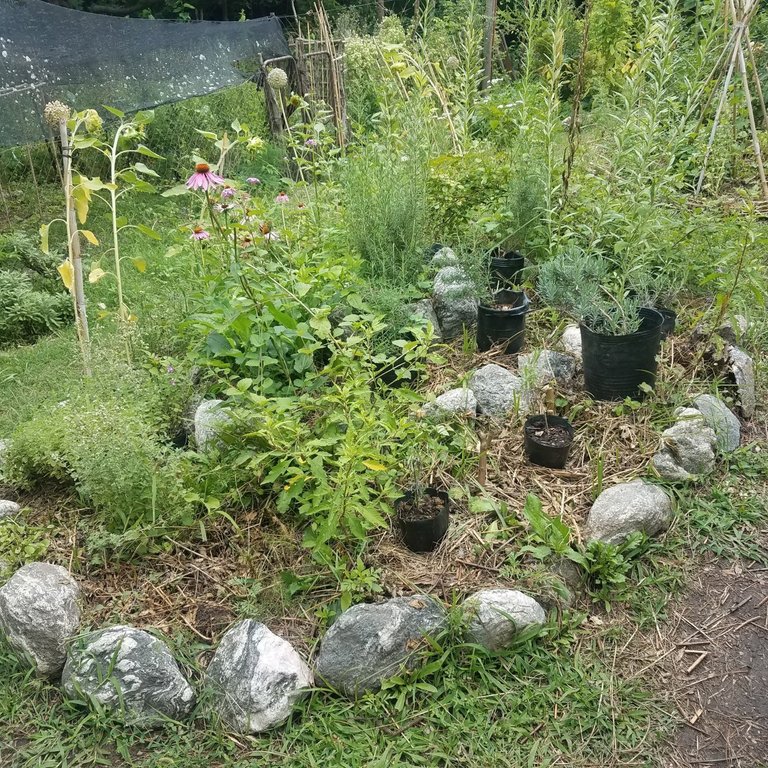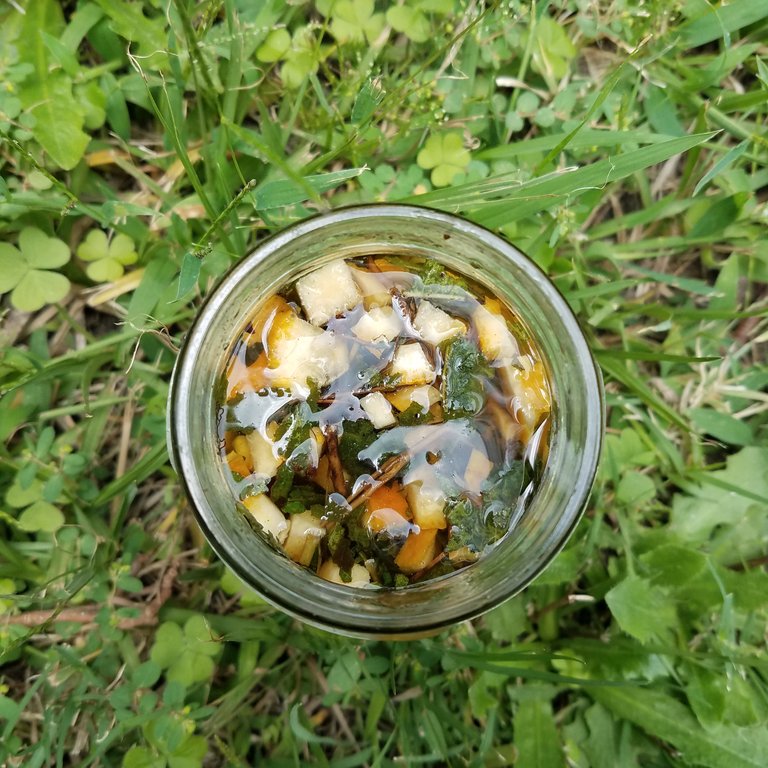Certain plants have captured the attention of herbalists worldwide and are now an indispensable member of the modern herbal apothecary. Such an herb is Echinacea, also known as Purple Cone Flower. Most often Echinacea is known for it's immune system supporting effects -- but, why exactly? Even though I have grown and used Echinacea for about four years now, I wasn't sure exactly how Echinacea works. I did some research and will answer this question as well as go into the details of how to grow this medicinal flower.

According to texts I have read, the purple cone flower once grew abundantly over the plains of North America, mainly what we now call the Mid-Western States. Echinacea has a long history of use by native people of the continent, and is still in use to this day to combat infection from snake bites as mentioned in "A Taste of Heritage: Crow Indian Recipes & Herbal Medicines" by Alma Snell.
European settlers and eclectic herbalists quickly adopted Echinacea root into herbal protocols to cool down fevers and help patients recover quickly from coughs and colds (see footnotes for specific reference titles).
The roots contain the most potent medicine and are full of essential oils while the leaves and flower contain polysaccharides which boost white blood cell production and as a result support immune system function (source).
The folk herbalism I have been formed in says that the roots accumulate the most potent medicine after growing for three years, or more. The astro-herbalism tradition I follow claims that roots are best harvested in fall and early winter when Earth's energy is stored in the soil and the roots of the plants. The flower and leaves can be harvested at any age of the plant. Though, keep in mind, that the flowers are only present during the summer months. This means that harvesting Echinacea is an activity that takes place during the entire year.
One way to capture the entire spectrum of medicine in a tincture form is by collecting the leaves and fresh flowers to the tincture in summer, preserving them in vodka, then digging up the roots to chop up and add to the tincture later on in fall.

As the herb gained in popularity and continues to, Echinacea has been over harvested in the wild and is rare to find in its former habitats of grasslands and open forests. Echinacea can be easily found in healthy food stores as a tincture but, as there is no way to know the age of the herb when harvested, or if the roots were included at all in the preparation, I think it is best to grow one's own Echinacea. Even more importantly, cultivating this flower as well as other over harvested herbs in a garden environment puts less pressure on native populations.
Every year when I visit my homelands of California I work in a native plant nursery with a close friend who has an incredible green thumb and is full of knowledge. She also has tons of heirloom seeds that she has been cultivating over the years and was kind enough to share her stash of Echinacea seeds and a run down of how to grow the plant too.
Echinacea seems to love places with colder winters and/or higher elevations in climates that have hot summers. My experience is that the plant didn't survive the heat of summer at sea level but thrived at around 2,000 ft in the same latitude. Echinacea prefers sunny locations and moderate to very fertile soil and doesn't need constant watering. I grow Echinacea in a herb spiral that doesn't have irrigation besides occasional rain and watering with a hose once a week.

Last fall I harvested a few plants of Echinacea before it went into dormancy during winter. Normally I craft single-herb tinctures but for Echinacea I like to make herbal formulas including the entire plants (leaves, flowers as well as the three year old root) and also orange peel (which I have an entire post about here).

I put the herb mater in a jar, filling it halfway and then filled to the top with vodka. Different herbal traditions state that a tincture takes anywhere from two weeks to forty days. Usually I go with a full lunar cycle, in this case new moon to new moon and even set the jar outside overnight (with the lid on) during the nights surrounding the full moon -- just for some extra healing and magic <3
Throughout this article I used information found in two of my favorite herbalism books: "Las Plants Medicinales" by Penelope Ody and "Herbs"by Jessica Houdret as well as the other e-books and articles which have been linked in the above paragraphs.